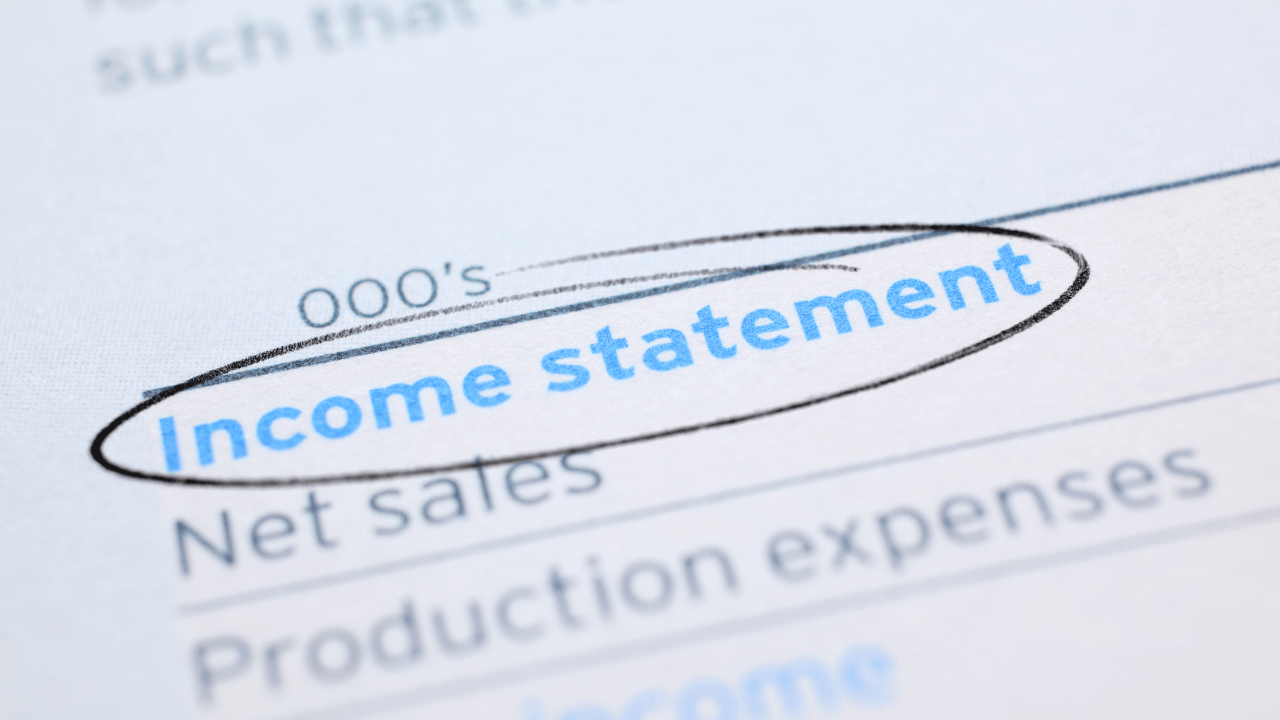Language:
The Most Common Mistakes in Ecommerce Income Statements and How to Avoid Them

In ecommerce, where every click can lead to a sale or a missed opportunity, understanding your financial health is crucial.
But behind the scenes is an intricate dance of numbers that ultimately dictates your business’s success – your income statement.
Yet, amidst the hustle and bustle of running an online store, it’s all too easy to stumble upon some common pitfalls that can skew your financial picture.
Whether you’re a seasoned seller or just starting in the online marketplace, doola Bookkeeping offers advanced features for financial statements and real-time reports to master these crucial elements.
We will not only enhance your understanding but also empower you to boost profitability and pave the way for sustainable growth!
In this blog, we’re diving deep into the most frequent mistakes made in ecommerce income statements and handing you actionable tips on how to sidestep these missteps.
Let’s get started on turning those financial fumbles into triumphs!
What Is an Income Statement?

The income statement provides valuable insights into a company’s revenue, expenses, and net profit or loss during a specific time period. Also known as a profit and loss (P&L) statement, it is one of the three main financial statements used to show whether a business is making or losing money.
An income statement typically covers a period of one year but can also be prepared monthly, quarterly, or semi-annually, depending on the business’s needs. It consists of several components, such as revenue or sales, which represent all incoming cash from the sale of goods or services before any deductions for expenses.
Next comes the cost of goods sold (COGS), which represents all direct costs associated with producing or purchasing products for sale. These include materials, labor, and overhead costs directly related to production. Subtracting COGS from revenue gives you gross profit.
Operating expenses come next and include all expenditures necessary to run your business’s day-to-day operations. You can subtract gross profit from operating profit (EBIT).
After operating profit comes non-operating items such as interest income/expense and gains/losses from investments. These are not directly related to regular operations but still impact overall profitability.
Finally comes net income/loss, which is calculated by subtracting taxes from EBIT + non-operating items. This allows you to clearly see where your money is coming from and where it is going.
By examining trends and changes in these numbers over time, you can gain valuable insights into your business’s financial health and make informed decisions accordingly.
10 Most Common Mistakes in Ecommerce Income Statements

❌ Forgetting to Record All Income Sources
One of the most common mistakes made in ecommerce income statements is forgetting to record all sources of income.
Ecommerce businesses often have multiple revenue streams, including sales from their website, marketplace sales (such as Amazon or eBay), subscription services, and affiliate marketing.
All of these sources need to be accurately recorded and included in the income statement to calculate your profits and taxable income.
❌ Misclassifying Expenses
Misclassifying expenses can happen when an expense is recorded in the wrong category or when an expense is accidentally left out altogether.
It’s important to carefully review all expenses and ensure they are accurately categorized in the income statement to ensure you haven’t missed out on any eligible tax deductions or credits.
❌ Not Accounting for Cost of Goods Sold (COGS)
COGS refers to the direct costs associated with creating and selling a product. This includes the cost of materials, labor, and any other expenses directly related to producing the product.
Not accounting for COGS can significantly impact the accuracy of an income statement, as it directly affects the calculation of gross profit.
❌ Failing to Account for Refunds and Discounts
While sales returns, refunds, and discounts are all standard in ecommerce, failure to account for these expenses can result in an inaccurate income statement.
It’s essential to include them as a revenue deduction to accurately reflect the true amount of sales and profits.
❌ Mixing Personal and Business Finances
Many small ecommerce businesses may combine personal and business finances, which can make it challenging to track and record transactions.
For example, if you have paid for business expenses using your personal credit card or vice versa, this can become a headache for bookkeepers during record-keeping or auditing.
By keeping your personal and business finances separate with your business bank account, you can avoid errors in the income statement.
❌ Overlooking Depreciation and Amortization
Depreciation and amortization refer to the decrease in the value of assets and intangible assets over time.
These expenses are often overlooked but can significantly impact the accuracy of an income statement since they must be included as expenses when calculating net profit.
❌ Inconsistent Reporting Periods

An income statement should cover a specific reporting period, such as a quarter or year, to show how much you are making and help you prepare for tax season.
However, an inconsistency in income statements can make it difficult to compare financial performance and calculate tax obligations.
For accurate comparison and analysis, it’s essential to consistently use the same period when creating income statements.
❌ Relying on Manual Calculations
Manual calculations can be prone to human error, leading to inaccurate entries in income statements and miscalculated figures.
We recommend using bookkeeping and accounting software or tools to automate these calculations and reduce the risk of errors.
❌ Not Reconciling with Bank Statements
To ensure the accuracy of an income statement, it should be regularly reconciled with bank statements.
This helps identify any discrepancies and ensures that all transactions have been accurately recorded.
❌ Neglecting to Update Regularly
Ecommerce income statements should be updated regularly to reflect the most current financial information.
Neglecting to update income statements can lead to outdated and inaccurate information, making it difficult to make informed business decisions.
How to Avoid These Mistakes: Best Practices for Accurate Ecommerce Income Statements

Accurate income statements are essential for any ecommerce business. However, there are common mistakes that can be made when preparing these statements.
To ensure the accuracy of your ecommerce income statement, it is crucial to understand best practices that can help you create accurate ecommerce income statements.
1. Keep Track of All Revenue Streams
Since ecommerce businesses often have multiple sources of revenue, make sure to keep track of all revenue streams throughout the reporting period.
We recommend having an automated bookkeeping system in place to track all revenue streams, including online sales, physical store sales, and any other sources of income.
This can be done through accounting software that automatically records each sale and reconciles this data with bank statements, which can help ensure that no revenue is missed.
2. Separate Operating Expenses from One-Time Expenses
While both types of expenses can affect a business’s overall profitability, they should be recorded separately, or they can lead to inaccuracies in calculating net profits.
To avoid this error, clearly differentiate between operating and one-time expenses when recording them on your income statement.
3. Separate Mixing Personal and Business Expenses
While it can be tempting to mix personal and business expenses, this can cause significant errors in your income statement.
To avoid this mistake, strictly separate personal and business expenses by opening a business bank account with a dedicated credit card to manage business expenses.
Also, keep detailed records of all business-related transactions and only include them on your income statement.
4. Reconcile Your Income Statement with Other Financial Documents
A crucial best practice for accurate ecommerce income statements is reconciling them with other financial documents, such as bank statements or sales reports from different platforms.
This process involves comparing the data on your income statement with data from these sources to ensure they match.
If you find any discrepancies, make sure they are investigated and corrected before finalizing your income statement.
Demystify Your Ecommerce Income Statements With doola Bookkeeping

Understanding income statements is essential for running an ecommerce business. However, many online sellers struggle with deciphering these statements due to their complex nature and confusing terminology.
Thankfully, you can demystify ecommerce income statements with doola Bookkeeping and gain a clear understanding of your finances.
With its user-friendly dashboard and reports, doola simplifies the process of generating and interpreting income statements.
With our bookkeeping, all expenses are automatically categorized based on bank transactions, minimizing errors while providing accurate financial reports.
Plus, all data is automatically synced and organized in real time, eliminating the risk of errors and providing up-to-date financial statements at any time.
So why struggle with complex statements when you can quickly gain a clear understanding of your finances with doola Bookkeeping?
Book a demo today and take the first step towards managing your business finances like a pro!



